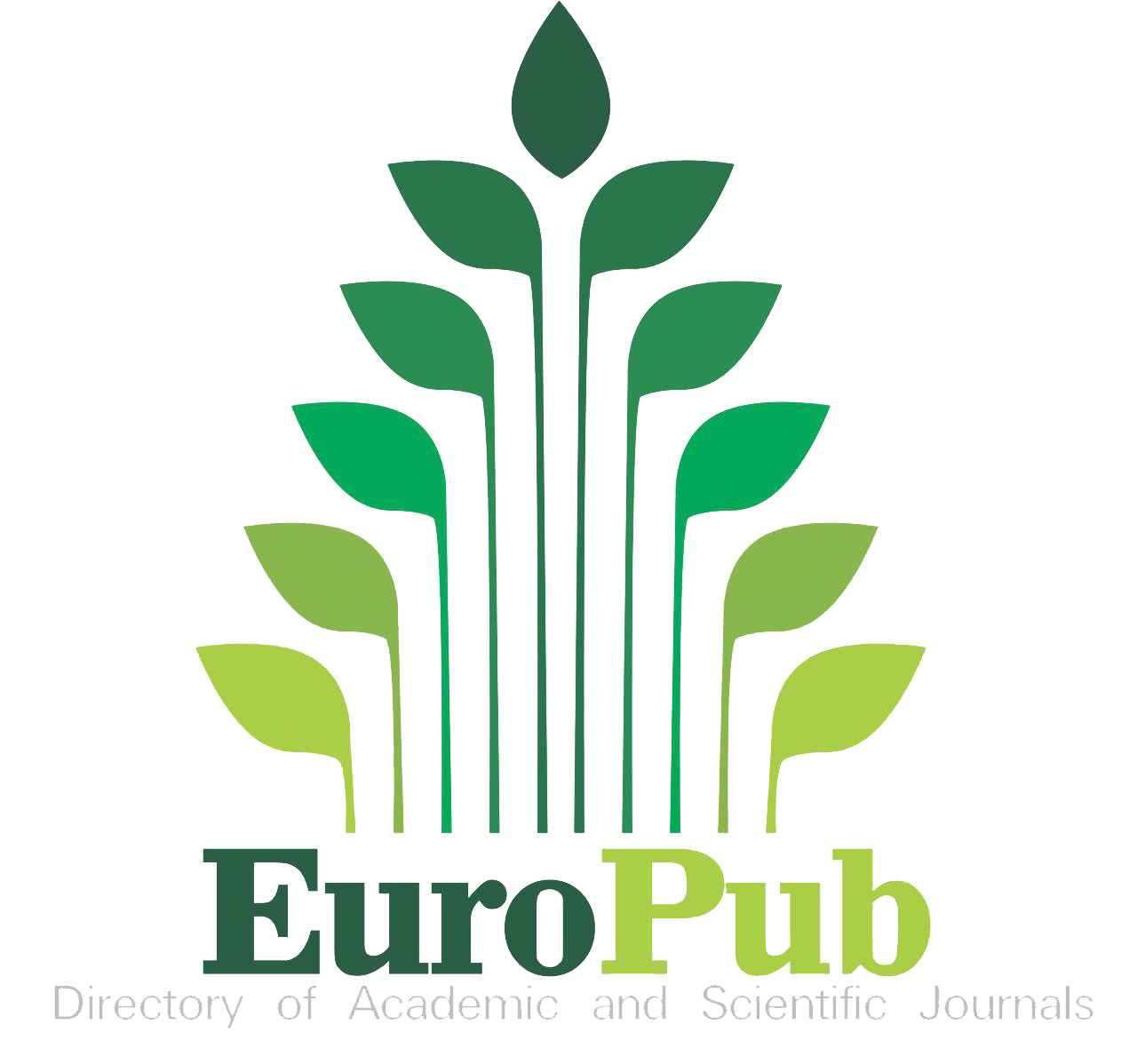Image of the Main Character and the Value of Character Education in Beranak Beruk Folklore
DOI:
https://doi.org/10.56724/ladu.v4i2.273Keywords:
character image, Kunaung, character educationAbstract
Background: The position and function of folklore in the last decade seem to have been increasingly shifted due to advances in information technology, cultural systems, social systems and currently developing political systems. It is not impossible that various forms of old culture, including folklore, will be neglected amidst the increasing activity of development and renewal, so it is feared that oral literature which is full of values, norms, and customs will eventually disappear without a trace.
Purpose: explaining the image of the character and the value of character education in the story of Beranak Beruk so that it can become a reference in improving character in the world of education.
Design and methods: The research method used is qualitative, with data collection techniques through document study and library observation.
Results: there are two types of character images in the story Beranak Beruk, there are good images and bad images. Of these two images, only the positive image can be used as a reference for character education values, namely religious, honest, tolerant, disciplined, hard work, creative, independent, democratic, curious, national spirit, love of the country, respect for achievement. , Friendly/Communicative, Loves Peace, Likes Reading, Cares for the Environment, Cares for Social Affairs. Responsibility.
Downloads
References
Aminuddin. (2004). Pengantar Apresiasi Sastra. Bandung: Sinar Baru Algensindo.
Abrams, M. H. (1976). The Mirror and The Lamp Romantic. Theory and Critical Tradition. London, New York: Oxford University Press.
Ali, A. Wahab. (1989). Imej Manusia dalam Sastra. Kuala Lumpur: Dewan Pustaka Kementrian Pendidikan Malaysia.
Atmazaki. (1990). Ilmu sastra Teori dan Terapan. Padang: Angkasa Raya.
Beeson, D. (1975). Women in Studies of Anging A Critique and Suggestion: social. DOI: https://doi.org/10.2307/799627
Creswell, John W. (2010). Research Design. Yogyakarta: PN Pustaka Belajar.
Dananjaya, James. (1994). Foklor Indonesia. Jakarta: PT. Temprit.
Djamaris, Edwar. (1994). Menggali Khasanah Sastra Melayu Klasik. Jakarta: Balai Pustaka.
Eugleton, Terry. (1998). Teori Kesusteraan Satu Pengenalan. Kuala Lumpur: Dewan Bahasa dan Pustaka Kementrian Pendidikan Malaysia.
Esten, Mursal. (1992). Tradisi dan Modernisasi dalam Sandiwara. Jakarta: Intermasa.
Fatih, Dr. Mansour. (1997). Analisis Gender dan Transformasi Sosial. Yogyakarta: Pustaka Pelajar.
Habibi, A., Riady, Y., Alqahtani, T.M.(2023) Drivers affecting Indonesian pre-service teachers’ intention to use m-learning: Structural equation modeling at three universities E-Learning and Digital MediaThis link is disabled., 2023, 20(6), pp. 519–538 DOI: https://doi.org/10.1177/20427530221118775
Habibi, A., Riady, Y., Samed Al-Adwan, A., Awni Albelbisi, N.(2023) Beliefs and Knowledge for Pre-Service Teachers’ Technology Integration during Teaching Practice: An Extended Theory of Planned Behavior Computers in the SchoolsThis link is disabled., 2023, 40(2), pp. 107–132 DOI: https://doi.org/10.1080/07380569.2022.2124752
Habibi, A., Riady, Y., Alqahtani, T.M.(2022) Online Project-Based Learning for ESP: Determinants of Learning Outcomes during Covid-19 Studies in English Language and Education, 2022, 9(3), pp. 985–1001 DOI: https://doi.org/10.24815/siele.v9i3.24928
Junus, Umur. (1985). Dari Peristiwa ke Imajinasi Wajah Sastra dan Budaya Indonesia. Jakarta: Gramedia.
Karimi, A. Latief. (1968). Suatu “ Penyelidikan tentang Kesustraan Kerinci dan Manfaat bagi Pembinaan Kebudayaan Indonesia” (tesis). Padang: FKSS IKIP Padang.
Luxemburg, Jan Van. (1992). Pengantar Ilmu Sastra. Jakarta: Gramedia.
Margono, S. (1997). Metodologi Penelitian Pendidikan. Jakarta: Rineka Cipta.
Muhardi, & Hassanuddin, W. S. (1992). Prosedur Analisis Fiksi. Padang: FPBS IKIP Padang.
Moeliono, Anton M. (1990). Kamus Besar Bahasa Indonesia. Jakarta: Balai Pustaka.
Nurgiyantoro. (2005). Teori Pengkajian Fiksi. Yogyakarta: Gajah Mada Universitas Press.
Putri, Kinkin Y. S.; Riady, Yasir; and Suwito, Annisa (2024) "Changing Healthy Living Behavior in the Post-Pandemic Era: New Communication Culture," JURNAL KOMUNIKASI INDONESIA: Vol. 13: No. 1, Article 10.
Riady, Y., Alqahtany, T.M., Habibi, A., Sofyan, S., Albelbisi, N.A.(2022) Factors affecting teachers’ social media use during covid-19 Cogent Social Sciences, 2022, 8(1), 2115658 DOI: https://doi.org/10.1080/23311886.2022.2115658
Riady, Y. (2014) Assisted learning through facebook: A case study of universitas terbuka's students group communities in Jakarta, Taiwan and Hong Kong Turkish Online Journal of Distance EducationThis link is disabled., 2014, 15(2), pp. 227–238 DOI: https://doi.org/10.17718/tojde.71656
Riady, Y. (2013). Litersi Informasi sejak dini: pengetahuan baru bagi anak Usia dini. Visi: Jurnal Ilmiah Pendidik dan Tenaga Kependidikan Pendidikan Non-Formal. 8(2).159-165. DOI: https://doi.org/10.21009/JIV.0802.10 DOI: https://doi.org/10.21009/JIV.0802.10
Riady. Y., Sofwan, M., Mailizar,M., Alqahtani, T. M., Yaqin, L. N., Habibi, A.(2023) How can we assess the success of information technologies in digital libraries? Empirical evidence from Indonesia. International Journal of Information Management Data Insights, 3(2), 2667-0968, https://doi.org/10.1016/j.jjimei.2023.100192 DOI: https://doi.org/10.1016/j.jjimei.2023.100192
Rosidi, Ajip. (1995). Sastra dan Budaya Keaderahan dalam Keindonesian. Jakarta: Pustaka Jaya.
Rusyana, Yus. (1981). Cerita Rakyat Nusantara : Himpunan Makalah tentang Cerita Rakyat. Bandung: PKSS IKIP Bandung.
Semi, M. Atar. (1984). Kritik Sastra. Bandung: Angkasa.
Semi, M. Atar. (1993). Metode Penelitian Sastra. Bandung: Angkasa.
Soekamto, Soerjono. (1987). Sosiologi Suatu Pengantar. Jakarta: Rajawali Press.
Sugihastuti, Suharto. (2005). Kajian Sastra Feminis. Yogyakarta: Pustaka Pelajar.
Tarigan, Hendry Guntur. (1984). Prinsip-prinsip Dasar Sastra. Bandung: Angkasa.
Teeuw, A. (1984). Sastra dan Ilmu Sastra. Jakarta: Pustaka Jaya.
Warouw, Martha Salae. (2000). Telaah Bahasa dan Sastra. Jakarta: Pusat Pembinaan dan Pengembangan Bahasa.
Wellek, Rene, & Werren Austin. (1993). Teori Kesustraan (Terjemahan melalui Budiyanto). Jakarta: Gramedia.
Widyahastuti, F., Riady, Y., Zhou, W.(2017) Prediction model students' performance in online discussion forum ACM International Conference Proceeding Series, 2017, pp. 6–10 DOI: https://doi.org/10.1145/3029387.3029393
Widyahastuti, F., Riady, Y., Fransiskus, D.(2017) Performance prediction as a new feature in e-learning Proceedings of the International Conference on e-Learning, ICEL, 2017, pp. 237–243
Wiyatni. (2009). Pengantar Kajian Sastra. Yogyakarta: Pustaka.
Wuradji. (2001). Pengantar Penelitian. Yogyakarta: Gramedia.
Ws, Hasanuddin. (1996). Drama, Karya dalam Dua Dimensi. Kajian Teori dan Analisis. Bandung: Angkasa.
Zuber Usman. (1960). Kesustraan Lama Indonesia. Djakarta: Gunung Agung.
Zakaria, Iskandar. (1981). Kumpulan Cerita Rakyat Kerinci. Jakarta: PN Balai Pustaka.
Downloads
Published
How to Cite
Issue
Section
License
Copyright (c) 2024 Angga Warda Prasakti, Yasir Riady

This work is licensed under a Creative Commons Attribution 4.0 International License.
Authors who publish with this journal agree to Copyright notice.














